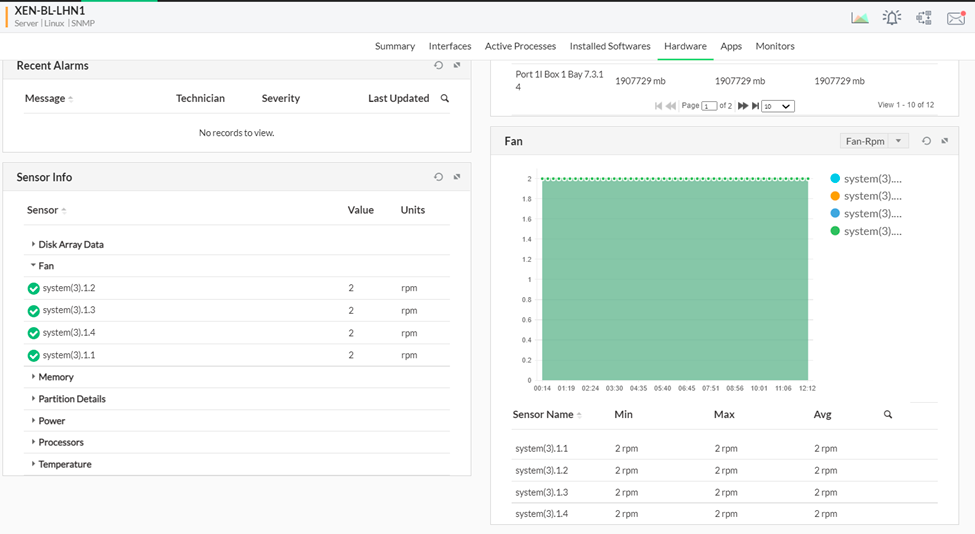A Hardware Monitor or Hardware Monitoring Tool is an application that communicates with various hardware components, fetching and representing data from different sensors (designed to monitor various hardware properties) in a format that can be used to interpret their physical state.
In other words, physical components (PSU, battery, fans, motherboard, CPU, memory, disks, etc.) have built-in hardware sensors that detect and measure specific changes in physical properties, e.g. temperature and voltage. These properties are then represented as numerical values.
The role of a hardware monitor is to present these values to the end user in a manner that is easy to understand; this way the user can interpret the state of a particular hardware component as well as its effect on the performance of an associated network device or an entire network.

 OpManager is a highly resourceful hardware monitor software that monitors your
OpManager is a highly resourceful hardware monitor software that monitors your